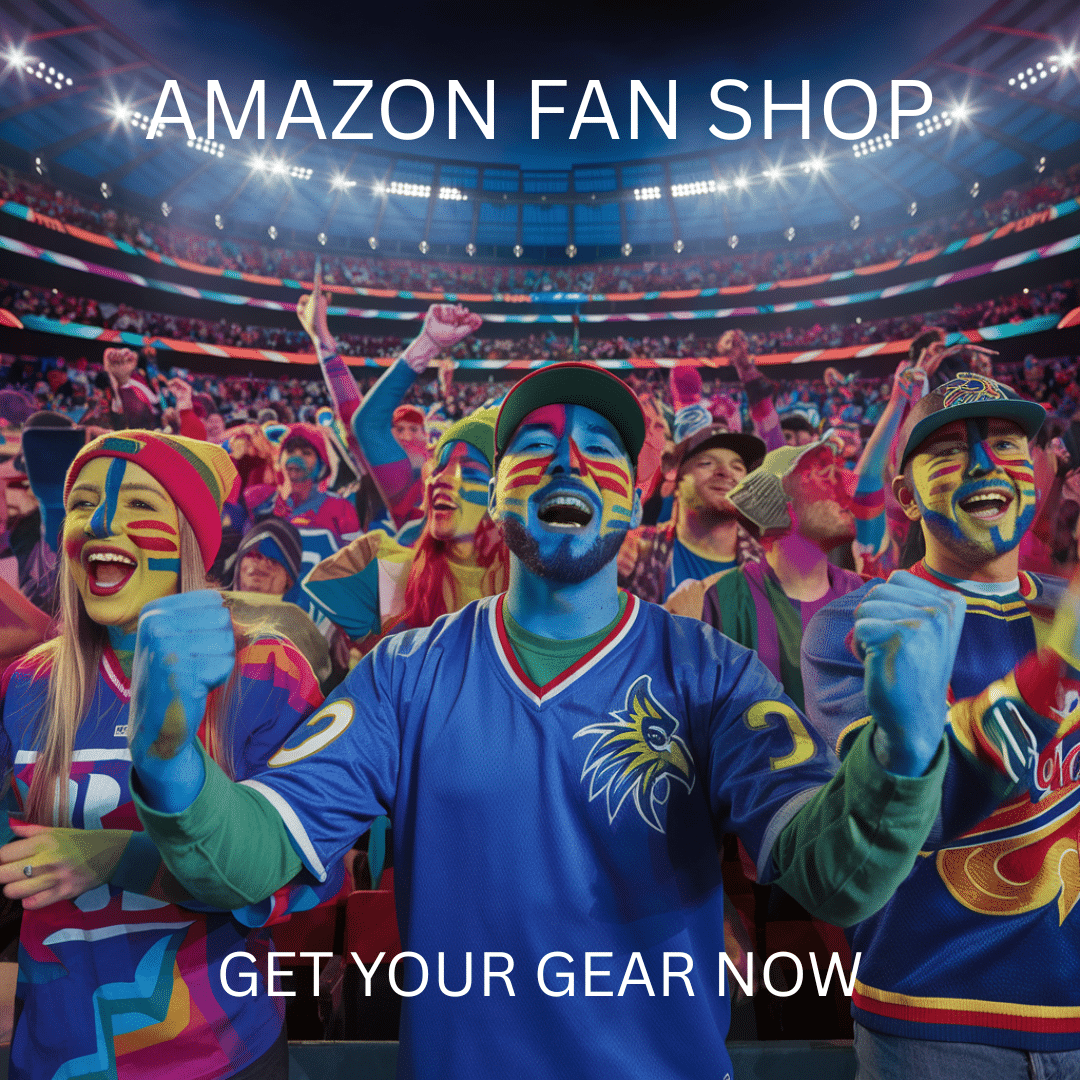What is the New NCAA Rule About Paying Athletes? Key Changes and Impact on College Sports in 2025
College sports are facing their biggest shake-up in decades. The NCAA, long a defender of amateurism, is now navigating major changes to how college athletes can be compensated. Under a landmark $2.8 billion settlement, schools from the biggest conferences will be required to share approximately 22% of their media rights revenue directly with athletes, fundamentally changing the financial relationship between universities and student-athletes.
This revolution follows the 2021 shift when the NCAA began allowing athletes to profit from their name, image, and likeness (NIL) through endorsement deals. That initial change opened doors for promotional opportunities, but the new rules go much further by creating a revenue-sharing model that treats players more like partners in the multibillion-dollar college sports enterprise.
The upcoming changes will eliminate previous sport-specific scholarship limits, potentially allowing NCAA D1 schools to offer scholarships to every athlete on their roster.
This represents a dramatic shift from the strict scholarship caps that have defined college athletics for generations, creating new opportunities for thousands of student-athletes while raising questions about competitive balance and the future identity of college sports.
Contents
Historical Context of NCAA Athlete Compensation

The debate over paying college athletes has deep roots in the NCAA’s foundational principles and has evolved significantly over time. The organization’s stance on amateurism has shaped college sports for over a century, creating a framework that only recently began to change.
Origins of Amateurism in College Sports
College athletics began taking organized form in the late 19th century, with the NCAA officially forming in 1906 primarily to address safety concerns in football. The concept of amateurism—keeping college sports “pure” from professional influence—became a cornerstone principle.
The NCAA formalized this amateur model in the 1920s, establishing rules that prohibited athletes from receiving compensation beyond educational expenses. This philosophy was influenced by British aristocratic ideals that valued sport for sport’s sake rather than financial gain.
By the 1950s, athletic scholarships became permitted, but strict boundaries remained between collegiate and professional sports. The NCAA argued that education, not athletics, should be the primary focus for student-athletes.
Previous Restrictions on Athlete Compensation
Until recently, NCAA rules strictly prohibited athletes from receiving compensation beyond scholarships. These restrictions covered various forms of payment:
- No salaries or stipends for athletic participation
- No endorsement deals or monetization of personal brand
- No autograph signings for money
- No use of name, image, or likeness for commercial purposes
Athletes who violated these rules faced severe penalties, including loss of eligibility and sanctions for their schools. High-profile cases, like Reggie Bush’s forfeited Heisman Trophy, demonstrated the NCAA’s firm stance.
Court challenges to these restrictions began mounting in the 2010s. The landmark O’Bannon v. NCAA case in 2014 first cracked the amateurism model, with the court ruling that prohibiting compensation for athletes’ name, image, and likeness violated antitrust laws.
This legal pressure eventually led to the significant NCAA policy changes we’ve seen since 2021.
Overview of the New NCAA Rule

The NCAA’s landscape has fundamentally transformed with the recent settlement that will allow direct compensation to college athletes. This historic change creates a structured payment system while maintaining some aspects of the traditional collegiate model.
Key Provisions of the Rule
The new NCAA rule establishes a salary cap system starting at approximately $20.5 million per school, eventually rising to around $30 million over time. This represents a monumental shift from the previous amateur model.
Schools can now provide direct compensation to student-athletes across all sports, not just the revenue-generating ones. The rule eliminates previous sport-specific scholarship limits, potentially allowing NCAA Division I schools to offer scholarships to every athlete on their roster.
The framework includes revenue-sharing mechanisms between institutions and athletes, with distributions varying based on sport, position, and performance metrics. Athletes retain their NIL (Name, Image, and Likeness) rights separate from these institutional payments.
| Category | Previous System | New System |
|---|---|---|
| Direct Pay | Prohibited | Up to $30M cap |
| Scholarships | Sport-specific limits | Potentially unlimited |
| NIL Income | Allowed (since 2021) | Continues alongside direct pay |
Differences from Previous NCAA Policies
The most striking difference is the abandonment of the “amateur” designation that defined college athletics for over a century. Previously, compensation was strictly limited to scholarships, stipends, and cost-of-attendance allowances.
Under the old system, athletes couldn’t receive direct payment for athletic performance. The new rule explicitly permits such compensation, marking a philosophical reversal for the NCAA.
Former restrictions on transfers have also been relaxed. Athletes no longer need to “sit out” a year when transferring between institutions, increasing player mobility and leverage.
The settlement comes after years of legal challenges and mounting public pressure. It represents the NCAA’s acknowledgment that the previous model was legally unsustainable amid growing recognition of athletes’ contributions to the multi-billion dollar industry.
Revisions to Eligibility Criteria for Athletes
Athletes must still meet academic requirements to maintain eligibility, though the focus has shifted from amateurism to educational progress. The new rules maintain GPA minimums and progress-toward-degree standards.
Compensation now factors into eligibility considerations differently. There are no NCAA-imposed limitations on NIL opportunities for student-athletes under rules taking effect August 1, 2024.
Transfer portal timelines and windows remain regulated despite the elimination of sit-out penalties. Athletes must enter the portal during specific periods to maintain immediate eligibility at their new institutions.
International student-athletes face additional considerations regarding visa status, as some visa categories restrict employment opportunities. The NCAA is developing guidance for these situations to ensure equitable treatment.
Case Studies and Precursors to Change

Several landmark legal actions and state laws paved the way for the NCAA‘s current transformation regarding athlete compensation. These challenges to the status quo created the momentum for today’s sweeping changes in college athletics.
California’s Fair Pay to Play Act
California fired the first meaningful shot across the NCAA’s bow in September 2019. Governor Gavin Newsom signed the Fair Pay to Play Act into law, effectively challenging the NCAA’s long-standing amateurism model.
The groundbreaking legislation allowed California student-athletes to profit from their name, image, and likeness (NIL) without losing eligibility. It represented a direct challenge to NCAA regulations that had prohibited such compensation for decades.
The law wasn’t scheduled to take effect until 2023, but its mere existence created immediate pressure. Other states quickly realized they would be at a recruiting disadvantage if they didn’t follow suit. California’s bold move essentially forced the NCAA’s hand, sparking a domino effect that would forever change the collegiate sports landscape.
Florida Legislation on Athlete Pay
Not to be outdone by its West Coast rival, Florida jumped into the fray with remarkable speed. Governor Ron DeSantis signed Florida’s athlete compensation bill in June 2020, allowing college athletes to profit from their NIL beginning July 1, 2021.
Florida’s legislation was particularly impactful for two reasons:
- Earlier effective date: By setting a 2021 implementation timeline, Florida accelerated the national conversation
- Recruiting implications: The state’s powerhouse programs (Florida, Florida State, Miami) could potentially gain advantages
The Florida bill put additional pressure on the NCAA, as it created a situation where different states would have different rules for athlete compensation. This patchwork approach made a national solution increasingly necessary.
Landmark Litigation and Settlements
The legal challenges to the NCAA’s compensation model reached a crescendo with several high-profile cases. Most notably, the Johnson v. NCAA and House v. NCAA lawsuits directly challenged the association’s amateurism principles.
These cases culminated in a historic $2.78 billion settlement that the NCAA agreed to pay over a decade to athletes who competed in Division I between 2016 and the present. The settlement represents back damages for athletes who were restricted from earning their market value.
Beyond the financial implications, this litigation fundamentally altered the NCAA’s approach to athlete compensation. The courts consistently ruled against the NCAA’s restrictions, forcing the association to adopt a more permissive stance toward how schools could compensate their athletes.
Impacts on College Sports and Athletes
The new NCAA compensation rules are creating ripple effects across the entire collegiate sports landscape. These changes touch everything from university budgets to athlete rights, fundamentally altering the college sports ecosystem we’ve known for decades.
Financial Effects on College Sports Programs
The implementation of the $20.5 million salary cap represents a seismic shift in college athletics economics. Major conference schools now face the prospect of allocating up to $20.5 million annually toward athlete compensation – a substantial new budget line item.
For Power 5 programs with robust football and basketball revenues, this may be manageable. However, smaller Division I schools face tough decisions about resource allocation.
Athletic directors are scrambling to determine sustainable budget models. Many programs are expected to redistribute funds from coaching salaries, facility improvements, and non-revenue sports.
The settlement requires schools from the biggest conferences to pay approximately 22% of their media rights revenue toward athlete compensation. This creates a clear financial hierarchy between well-funded and resource-limited programs.
Projected Financial Impact on Division I Schools:
| Conference Tier | Est. Annual Compensation | Potential Budget Adjustments |
|---|---|---|
| Power 5 | $15-20.5 million | Minimal cuts to other areas |
| Group of 5 | $5-10 million | Moderate program adjustments |
| Mid-Major | $2-5 million | Significant restructuring |
Legal and Ethical Implications for Student-Athletes
The new compensation framework has fundamentally changed the relationship between athletes and their institutions. Athletes now function as both students and revenue-generating professionals.
This dual status raises complex questions about academic responsibilities, time management, and tax implications. Many student-athletes will need financial literacy training to navigate their newfound income sources.
NIL deals remain separate from direct university compensation, creating multiple revenue streams for top athletes. The most marketable stars in football and basketball stand to earn significantly more than peers in Olympic sports.
There’s growing concern about unintended consequences of pay-for-play. Will athletes prioritize personal branding over team success? Could financial incentives impact transfer decisions even more than the current portal system?
Universities must develop clear policies regarding practice requirements, academic standards, and behavioral expectations for compensated athletes. The traditional “student-athlete” model is being reimagined in real-time.
Inclusion and Equity Considerations
Title IX compliance remains a critical factor as the compensation model rolls out. Schools must ensure equitable treatment between men’s and women’s sports, potentially requiring equal revenue distribution regardless of sport-specific profitability.
Early data suggests football and men’s basketball players will receive disproportionately higher compensation, reflecting market realities but raising fairness concerns. Women’s basketball, particularly at successful programs, represents the most commercially viable female sport.
Olympic sports athletes may see minimal direct compensation despite their contributions to athletic department prestige. This disparity could affect roster management and scholarship distribution across non-revenue programs.
Transfer portal activity is expected to intensify as athletes seek optimal compensation packages. Schools with limited resources may struggle to retain top talent, potentially widening the competitive gap between wealthy and modest programs.
Athletes from disadvantaged backgrounds stand to benefit significantly from these changes, potentially transforming collegiate sports into a more effective economic mobility vehicle.
Implementation and Compliance
The NCAA’s new payment structure brings sweeping changes that institutions must navigate carefully. Athletic departments face significant adjustments in how they manage athlete compensation, while remaining compliant with evolving federal regulations and monitoring mechanisms.
Role of Athletic Directors and Institutions
Athletic directors now shoulder unprecedented responsibilities in this new era of college sports. They must develop comprehensive policies that balance competitive interests with financial realities while maintaining educational priorities.
Many ADs are creating dedicated NIL compliance offices with specialized staff to handle the influx of athlete deals and revenue-sharing logistics. These offices typically require 3-5 new full-time employees at power conference schools.
Budget restructuring has become essential. Athletic departments must carve out funds for direct athlete payments that could reach into the millions annually. According to recent surveys, 78% of Division I programs anticipate reallocating resources from facilities projects toward athlete compensation.
Communication channels between administrators, coaches, and athletes have been formalized at most institutions to ensure transparency. This includes regular education sessions about new NIL opportunities and responsibilities.
Federal Law and Collective Bargaining
The landmark Supreme Court ruling in 2021 opened the door for today’s payment structure. Federal oversight now provides a unified framework replacing the previous patchwork of state laws.
Congressional action established baseline standards for athlete compensation, superseding individual state NIL legislation. This creates consistency across all Division I programs regardless of location.
Key Federal Guidelines:
- Minimum compensation thresholds
- Tax classification of athlete payments
- Standardized disclosure requirements
- Anti-discrimination protections
Collective bargaining has emerged as a critical component following the NCAA’s antitrust settlement. Athletes now have representation through newly formed associations that negotiate revenue-sharing percentages, healthcare provisions, and academic support services.
The 22% revenue cap established in the settlement serves as the foundation for negotiations, though individual conferences may implement varying distribution models.
Monitoring and Enforcement of NIL Deals
The NCAA has established a centralized database tracking all athlete compensation agreements. This system flags potential violations and ensures transparency in the marketplace.
Third-party verification services have become standard practice for institutions vetting potential deals. These services evaluate fair market value and contractual terms to prevent disguised recruiting inducements.
Enforcement mechanisms have been strengthened with dedicated investigative teams focused on compensation irregularities. Penalties for violations include scholarship reductions, postseason bans, and financial sanctions.
Compliance Requirements for NIL Deals:
| Requirement | Timing | Responsible Party |
|---|---|---|
| Deal registration | Within 7 days | Athlete |
| Fair market verification | Prior to execution | Institution |
| Tax documentation | Quarterly | Both parties |
| Conflict review | Ongoing | Compliance office |
The NCAA’s April 2024 rule changes established clearer guidelines for institutions to follow when monitoring athlete endorsements and partnerships without imposing unnecessary restrictions.
Future Considerations
The NCAA’s shift toward allowing athlete compensation represents just the beginning of a transformative era in college sports. Several important developments on the horizon will shape how this new system evolves and impacts universities, athletes, and the competitive landscape.
Potential for Further NCAA Reforms
The historic NCAA settlement marks only the first step in what could be a series of major reforms. By April 7, 2025, the NCAA will likely need to establish clearer frameworks for how direct payments to athletes function within the new revenue-sharing model.
Many experts anticipate additional rule changes regarding transfer portal timelines and eligibility requirements. The NCAA may also implement stricter oversight mechanisms for NIL deals to prevent circumvention of the 22% revenue cap system.
Schools in smaller conferences are pushing for tiered compensation structures that account for varying athletic department budgets. This could prevent a total concentration of talent at the wealthiest programs.
The courts remain active participants in this evolution, with several pending lawsuits that could further reshape athlete rights and university obligations.
Emerging Trends in College Athlete Earnings
Athletes are increasingly forming collective bargaining groups to maximize their earning potential. These athlete-led organizations negotiate with schools and sponsors as unified entities rather than as individuals.
Projected Annual Earnings by Sport (2025-2026)
| Sport | Avg. Top-Tier Earnings | Median Earnings | Primary Income Source |
|---|---|---|---|
| Football | $350,000 | $75,000 | School payments + endorsements |
| Basketball | $280,000 | $60,000 | School payments + endorsements |
| Baseball | $85,000 | $25,000 | Mostly endorsements |
| Olympic Sports | $40,000 | $15,000 | Mostly social media deals |
Female athletes in particular are seeing dramatic growth in earning potential, especially in basketball, volleyball, and gymnastics. The NIL policy implementation has allowed these athletes to build personal brands that generate substantial income.
Digital platforms are becoming essential for athlete monetization, with TikTok and Instagram serving as primary vehicles for sponsorship opportunities.
Long-Term Effects on College Athletics
The financial landscape of college sports will likely undergo significant restructuring as direct athlete compensation becomes normalized. Athletic departments must now balance traditional expenses with the new reality of player payments.
Some smaller programs may consolidate or eliminate certain sports to focus resources on revenue-generating teams. This could reduce overall athletic opportunities at some institutions while expanding them at others.
The traditional “student-athlete” model continues to evolve toward a more professional approach. Schools are expanding support services to help athletes manage their newfound income, including financial literacy programs and business development resources.
Recruiting dynamics will permanently change. Schools’ ability to facilitate compensation will become as important as facilities or coaching staff. The NCAA’s antitrust settlement effectively creates a regulated compensation system that will reshape competitive balance.
Fan engagement may transform as well. Supporters will increasingly connect to athletes through their personal brands rather than solely through team affiliations.



